New Items
These are our most recently listed items, in all categories.
Show Paging
 BREKER, ARNO (1900-91) German Sculptor; Official State Sculptor of Nazi Germany, advanced as the antithesis of “Degenerate Art”
BREKER, ARNO (1900-91) German Sculptor; Official State Sculptor of Nazi Germany, advanced as the antithesis of “Degenerate Art”
-100.png)
-100.png)
Signed Photograph, “Arno Breker,” a 4” x 5 ¾” postally unused postcard. Black & white.
Excellent.
 BROOKS, PHILLIPS (1835-93) American Clergyman; Author of “O Little Town of Bethlehem”
BROOKS, PHILLIPS (1835-93) American Clergyman; Author of “O Little Town of Bethlehem”
-100.png)
-100.png)
Autograph Letter Signed, two pages, front and reverse of the first leaf of an imprinted, folded 4 ¾” x 8” letter-sheet, expressing condolences to a friend upon the death of a brother.
“September 18, 1889. My dear Bob, I did not know when I wrote today what you were passing through. I had not heard about your brother’s death. May I tell you how I am sorry for everything which brings you pain with all my heart & will you believe how earnestly I ask for the highest help. God bless you & give you His best light. You will not want me to care to you on Monday as I proposed. If so, you will tell me so & I shall wholly understand. Be sure that I am always Your old friend, Phillips Brooks.”
Lightly and evenly toned, with a horizontal fold at the center; pencil notations in the upper right corner.
 BROOKS, PHILLIPS (1835-93) American Clergyman; Author of “O Little Town of Bethlehem”
BROOKS, PHILLIPS (1835-93) American Clergyman; Author of “O Little Town of Bethlehem”
-100.png)
-100.png)
Autograph Letter Signed, two pages on front and reverse of a single imprinted 3 ½” x 4 ¼” card, declining a request to attend a meeting.
“March 28, 1886. My dear Mr. Bertrand, I am sorry to say that all my Tuesday Evenings now are hopelessly engaged, so that I must not hope to be at your meeting, which I doubt not will be very interesting & successful. Yours most sincerely, Phillips Brooks.”
Lightly and evenly toned, with several minor stains and light creases.
 CLEM, JOHN LINCOLN “JOHNNY” (1851-1937) Union Drummer Boy - 22nd Ohio Infantry, in the American Civil War; Known as the “Drummer Boy of Chickamauga”; Retired with the rank of Brigadier General in 1915
CLEM, JOHN LINCOLN “JOHNNY” (1851-1937) Union Drummer Boy - 22nd Ohio Infantry, in the American Civil War; Known as the “Drummer Boy of Chickamauga”; Retired with the rank of Brigadier General in 1915
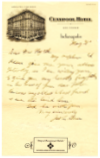
Autograph Letter Signed, on 6” x 9” Indianapolis, Indiana hotel stationery; no year, but from later life, sending condolences to an old friend.
“May 31.
Dear Mrs. Nyeth,
My nephew Ed Adam gave me your address yesterday, so I am writing you to give you my heartly [sic] Sympathy in the loss of your dear father. He was my oldest & best friend & we all loved him.
God be with you,
Jno. L. Clem.
__________________________________
Lightly and evenly toned, with two horizontal folds and a few tiny tears at the edges.
 DECATUR, STEPHEN (1779-1820) U.S. Navy Commodore – Barbary Wars & The War of 1812; Killed in a duel with Commodore James Barron – March 22, 1820; Namesake of numerous cities & counties in Alabama, Georgia, Illinois, Tennessee & Texas
DECATUR, STEPHEN (1779-1820) U.S. Navy Commodore – Barbary Wars & The War of 1812; Killed in a duel with Commodore James Barron – March 22, 1820; Namesake of numerous cities & counties in Alabama, Georgia, Illinois, Tennessee & Texas

Signature, “Stephen Decatur,” a frank on a 1 ¼” x 2 ¾” portion of a postal cover; with rank in another hand above and the pencil notation “1819” written vertically at the upper right corner. A stamped “FREE” partially intersects Decatur’s signature.
Lightly toned, with a stain at the left edge; affixed to heavier backing.
 FILLMORE, MILLARD (1800-74) Thirteenth U.S. President - 1850-53; U.S. Vice President – 1849-50; U.S. Congressman – New York – 1833-35 & 1837-43
FILLMORE, MILLARD (1800-74) Thirteenth U.S. President - 1850-53; U.S. Vice President – 1849-50; U.S. Congressman – New York – 1833-35 & 1837-43
-100.png)
-100.png)
Autograph Letter Signed, 8” x 10”. As a second-term U.S. representative from New York, Fillmore solicits Secretary of War Joel Poinsett in the discharge of a constituent’s son from his enlistment. A lengthy report on the reverse is signed by longtime U.S. Army Adjutant General Roger Jones.
“House of Rep[resentatives]
July 6, 1840
Sir,
I have the honor to enclose a letter from James Sheldon, Esq[uire], a counsellor at Law residing in the city of Buffalo, N.Y. with an affidavit of Mr. & Mrs. Brooks, on which they ask to have his son, a lad of 18, discharged from his enlistment into the merited Service of that place.
As I shall soon leave, your earliest attention to this application will greatly oblige,
Your most ob[edien]t ser[van]t,
Millard Fillmore
Hon[orable] J.R. Poinsett
P.S. Please return Mr. Sheldon’s letter.”
Somewhat heavier toning from past matting at the edges; an old tear at the upper right corner, along with clean separation at the edges of two horizontal folds, is repaired on the reverse; several chips at the left edge and corner of the integral leaf.
 FRENCH, LUTHER PIERCE (1812-95) Union Chaplain – 20th Maine Volunteer Infantry
FRENCH, LUTHER PIERCE (1812-95) Union Chaplain – 20th Maine Volunteer Infantry

Civil War-Date – as Chaplain of the 20th Maine Infantry
Signed Envelope, 3” x 5 ¼”, “Soldiers letter, L.P French, Chaplain 20 Maine Vol[unteer]s,” originally containing a letter (no longer present) from a soldier in the 20th Maine Volunteer Infantry, the unit notably led by Colonel Joshua Lawrence Chamberlain at the Battle of Gettysburg; bearing a Washington, DC postmark from December of an indiscernible year, along with a “Due 3” handstamp.
Lightly and evenly toned, with the expected soiling and wear, particularly at the edges.
 GARNETT, RICHARD BROOKE (1817-63) Confederate Brigadier General - Virginia; Killed-in-Action during Pickett’s Charge at the Battle of Gettysburg - July 3, 1863
GARNETT, RICHARD BROOKE (1817-63) Confederate Brigadier General - Virginia; Killed-in-Action during Pickett’s Charge at the Battle of Gettysburg - July 3, 1863
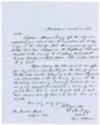
Very Rare Autograph Letter Signed – returning the remains of a West Point classmate, mortally wounded at the Mexican War Battle of Churubusco
Autograph Letter Signed, 8” x 10”, to “Mr. Francis Bacon, Alfred, M[ain]e,” returning the remains of his brother, Lieutenant John Danforth Bacon, who died on October 12, 1847 from wounds received at the Mexican War Battle of Churubusco.
“New Orleans, March 13, 1848.
D[ea]r Sir:
Captain Monroe having left the city unexpectedly for a short time, he requested me to say to you in his behalf – that the remains of your brother had been shipped on the Lapland to Boston, directed to the care of U.S. Acting Assistant Quarter Master at that place. She sailed about the 9[th] Inst[ant].
Before closing this letter, permit me to offer you my sincere sympathy for the loss of your brother, who besides belonging to the same Regiment, was associated with me many years at the Military Academy. I always esteemed his as one of my dearest friends & it is a source of comfort to know that he met his fate like a soldier – surrounded by those who loved him as a brother.
I am very truly yours,
R.B. Garnett,
L[ieutenan]t 6th Inf[antr]y.
U.S.A.
New Orleans
Excellent overall, with the expected original folds.
 GLADDEN, ADLEY HOGAN (1810-62) Confederate Brigadier General; Mortally wounded while leading the 1st Louisiana Infantry at the Battle of Shiloh – April 6, 1862; Veteran of the Mexican War & the Second Seminole War
GLADDEN, ADLEY HOGAN (1810-62) Confederate Brigadier General; Mortally wounded while leading the 1st Louisiana Infantry at the Battle of Shiloh – April 6, 1862; Veteran of the Mexican War & the Second Seminole War

Civil War-Date Signature
Signature & Rank, “A.H. Gladden, Brig[adier] Gen[era]l,” on a 1” x 6” portion of a partly printed Confederate document, December 18, 1861.
Evenly toned, with old glue staining on the reverse.
 GORMAN, WILLIS ARNOLD (1816-76) Union Brigadier General; Early-war Colonel of the 1st Minnesota Infantry; Minnesota Territory Governor – 1853-57; U.S. Representative – Indiana – 1849-53; Veteran of the Mexican War
GORMAN, WILLIS ARNOLD (1816-76) Union Brigadier General; Early-war Colonel of the 1st Minnesota Infantry; Minnesota Territory Governor – 1853-57; U.S. Representative – Indiana – 1849-53; Veteran of the Mexican War
-100.png)
-100.png)
Civil War-Date Autograph Letter Signed – with excellent Vicksburg Campaign content
Autograph Letter Signed, two pages, front and reverse of an imprinted 8” x 10 page as Commander of the District of Eastern Arkansas. In the early stages of the Vicksburg Campaign, Gorman sends a highly detailed account of operations under his command to Admiral David Dixon Porter. Worthy of further study.
“St. Charles [Arkansas], Jan[uar]y 20th 1863
Acting Rear Admiral
D[avid] D[ixon] Porter
Admiral:
Your dispatch of the 19th (yesterday) was duly rec[eive]d at 8 A.M. Today. All my transports will be at the mouth tomorrow. From there I will row up to Helena, as each boat has Artillery, Cavalry and Infantry and I cannot fit out the force I am going to send to Maj[or] Gen[era]l McClernand at any other place. I will send for the Vicksburg Expedition all the force possible, at least one full brigade, one field battery fully equipped, and I think I may be able to send two brigades, being one more than the General asks.
My success with the Expedition up White River has been complete. At St. Charles I captured a large amount of forage, corn &c. and some prisoners. At Duvall’s Bluff I took two 8 inch Columbiads with carriages in complete order, 25 prisoners with 70 new Enfield rifles, some stores, tents, &c., destroyed 3 cars & R[ail] R[oad] track, and burnt two Bridges – one 90 and the other 200 feet long.
At Des Arc we captured 100 prisoners, several hundred rounds of fixed 6 po[und] ammunition, several thousand bushels of Gov[ernmen]t corn, a large rebel mail, and destroyed their Telegraph. All the force of the enemy have crossed the Arkansas [River] to Little Rock.
I should have gone to Little Rock dire[c]t if I could have crossed the sea of mud and wa[ter] between there and Duvall’s Bluff, but this is impossible at the present, and my orders were such as to comp[lete] my return at once.
I am Admiral very respectfully y[ou]r
Ob[edient] Serv[an]t,
W.A. Gorman
Brig[adier] Gen[ra]l Com[mandin]g.”
Lightly and evenly toned, with two horizontal folds; an old paper mounting strip at the right edge of the reverse obscures a few letters of text.
 LEE, ROBERT EDWARD (1807-70) Confederate General & Commander of the Army of Northern Virginia
LEE, ROBERT EDWARD (1807-70) Confederate General & Commander of the Army of Northern Virginia
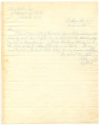
Autograph Letter Signed, 7 ¾” x 10 ¾”, one page. As Post Engineer at Fort Hamilton, situated at the mouth of New York Harbor in Brooklyn, Lee writes to a materials supplier, ordering hydraulic cement, commonly used to construct and repair stone and cement structures, even underwater. While serving as post engineer at Fort Hamilton, 1841-46, Lee is credited with the design and construction of several New York-area fortifications, notably Fort Richmond, Fort Tompkins, and the forts at Willetts Point and Sandy Hook.
“Henry Wilde, Esq[uir]e,
Sec[retar]y Newark L, & C, Ms. Co.,
Fort Hamilton, N[ew[ Y[ork],
11 April 1843.
Sir,
I have rec[eive]d your letter of the 18 Ult[im]o, offering to furnish me with fresh hydraulic Cement @ $1.25/100 per cask of 300 lbs., deducting 12 ½ c[ents] per cask for those returned. I will thank you to send me to this place 50 Casks with as little delay as practicable. The cement must be fresh, & the Casks light & strong. You may also send 10 Casks of Lime.
Very respectf[ull]y Your Ob[edien]t Serv[an]t,
R.E Lee,
Capt[ain] Eng[ineer]s.”
Lightly and evenly toned, with minor soiling and wear and the expected folds; the integral leaf, addressed in another hand, is bound by a paper strip at the left edge, and has a small hole well beneath the address from the opening of a no-longer-present wax seal.
 LEE, ROBERT EDWARD (1807-70) Confederate General & Commander of the Army of Northern Virginia
LEE, ROBERT EDWARD (1807-70) Confederate General & Commander of the Army of Northern Virginia

As Superintendent of the U.S. Military Academy at West Point
LEE, ROBERT EDWARD (1807-70) Confederate General & Commander of the Army of Northern Virginia
GARNETT, ROBERT SELDEN (1819-61) Confederate Brigadier General; Killed-in-Action at the Battle of Corrick’s Ford, Virginia, July 13, 1861 - the first general officer to be killed during the American Civil War; Veteran of the Mexican & Seminole Wars
TOTTEN, JOSEPH GILBERT (1788-1864) Union Brigadier General during the American Civil War; Veteran of the War of 1812 & the Mexican War
Endorsement Signed, as Superintendent of the U.S. Military Academy at West Point, “Approved, R.E. Lee, Captain Corps Eng[ineer]s & B[revet] Col[onel, Sup[erintenden]t M[ilitary] A[cademy],” on a 3 ½” x 7” portion of a letter from Robert S. Garnett, whose signature and rank are at upper right: “R.S. Garnett, Capt[ain] 7th Inf[antry] & B[revet] Maj[or], Com[mandant] of Corps of Cadets.” Also endorsed by longtime U.S. Army Officer Joseph Totten beneath, “Eng[inee]r Department, July 7, 1853. Approved, Jos. G. Totten.”
Several light creases and a few minor stains detract very little.
 LEE, ROBERT EDWARD (1807-70) Confederate General & Commander of the Army of Northern Virginia
LEE, ROBERT EDWARD (1807-70) Confederate General & Commander of the Army of Northern Virginia
-100.png)
-100.png)
Autograph Document Signed, 8” x 10”, Fort Hamilton, New York, June 2, 1846, “R.E. Lee, Capt[ain] Eng[inee]rs,” a partly printed requisition for supplies sold to the U.S. Army for use at the installation. The hardware being purchased is enumerated in Lee’s hand on the front, as is a three-line docket beneath his signature on the reverse. While serving as post engineer at Fort Hamilton, 1841-46, Lee is credited with the design and construction of several New York-area fortifications, notably Fort Richmond, Fort Tompkins, and the forts at Willetts Point and Sandy Hook.
Seldom seen in its entire form, as Lee’s signature and four lines of print preceding it are often excised and sold as a smaller document. Lightly and evenly toned, with two horizontal folds, several minor stains and paper breaks.
 McCARTHY, JOSEPH RAYMOND (1908-57) U.S. Senator – Wisconsin – 1947-57; Anti-Communist Crusader in the early 1950s; Advocated to commute the death sentences of the German SS Officers responsible for the Malmedy Massacre
McCARTHY, JOSEPH RAYMOND (1908-57) U.S. Senator – Wisconsin – 1947-57; Anti-Communist Crusader in the early 1950s; Advocated to commute the death sentences of the German SS Officers responsible for the Malmedy Massacre

Signed First Day Cover, 3 ¾” x 6 ½”, “Joe McCarthy,” with an October 8, 1956, Appleton, Wisconsin postmark and an ironic “PRAY FOR PEACE” cancellation. Co-signed beneath by local Postmaster Francis H. Sumnicht and two other notables.
Excellent, with light, even toning.
 McCARTHY, JOSEPH RAYMOND (1908-57) U.S. Senator – Wisconsin – 1947-57; Anti-Communist Crusader in the early 1950s; Advocated to commute the death sentences of the German SS Officers responsible for the Malmedy Massacre
McCARTHY, JOSEPH RAYMOND (1908-57) U.S. Senator – Wisconsin – 1947-57; Anti-Communist Crusader in the early 1950s; Advocated to commute the death sentences of the German SS Officers responsible for the Malmedy Massacre

Signed First Day Cover, 3 ¾” x 6 ½”, “Joe McCarthy,” with an October 8, 1956, Appleton, Wisconsin postmark and an ironic “PRAY FOR PEACE” cancellation. Co-signed beneath by local Postmaster Francis H. Sumnicht and two other notables.
Excellent, with light, even toning.
 McCOOK, DANIEL, JR. (1832-64) Union Brigadier General; Colonel of the 52nd Ohio Infantry; Mortally wounded at the Battle of Kennesaw Mountain – June 27, 1864
McCOOK, DANIEL, JR. (1832-64) Union Brigadier General; Colonel of the 52nd Ohio Infantry; Mortally wounded at the Battle of Kennesaw Mountain – June 27, 1864
-100.png)
Civil War-Date Document Signed
Document Signed, 8” x 10”, “Approved, Danl. McCook, Co[lone]l Com[man]d[in]g Brigade,” a requisition for service to the Quartermaster’s Department of the 52nd Ohio Infantry, August 30 to November 18, 1862.
Lightly and evenly toned, with heavier staining along two horizontal folds; water staining at the left and the center fold, well away from McCook’s endorsement.
 McCOOK, DANIEL, JR. (1832-64) Union Brigadier General; Colonel of the 52nd Ohio Infantry; Mortally wounded at the Battle of Kennesaw Mountain – June 27, 1864
McCOOK, DANIEL, JR. (1832-64) Union Brigadier General; Colonel of the 52nd Ohio Infantry; Mortally wounded at the Battle of Kennesaw Mountain – June 27, 1864
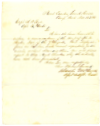
Civil War-Date Letter Signed
Letter Signed, 7 ¾” x 9 ¾”, an early-ear communication regarding supplies needed for the Seventh Brigade, under General James Negley.
“Head Quarters Second Division, Camp Wood [Kentucky], Dec[ember] 16, 1861.
Capt[ain] J.F. Boyd
As[sistan]t Q[uarte]r Master.
Sir,
I have the honor herewith to enclose, a memorandum of the wants of the Q[uarte]r Masters Dep[artmen]t of the 7th Brigade. Gen[era]l Negley informs me he has, made several requisitions for the articles, without obtaining them. You will please ereport to these Head Quarters why the articles have not been furnished.
I am Sir, very respectfully,
Your Obedient Servant,
Danl. McCook
As[sistan]t Adj[utan]t Gen[era]l.”
Lightly and evenly toned, with two horizontal folds, several light surface creases, and a few old paper and hinge remnants on the reverse.
 PARKER, ELY SAMUEL (1828-95) Union Brevet Brigadier General; Seneca Indian; Friend, Aide, and Military Secretary to Ulysses S. Grant; Transcribed the official Confederate surrender documents at Appomattox; U.S. Commissioner of Indian Affairs – 1869-71
PARKER, ELY SAMUEL (1828-95) Union Brevet Brigadier General; Seneca Indian; Friend, Aide, and Military Secretary to Ulysses S. Grant; Transcribed the official Confederate surrender documents at Appomattox; U.S. Commissioner of Indian Affairs – 1869-71

Civil War-Date Autograph Document Signed – Rations for Grant’s teamsters before the Battle of the Wilderness
Autograph Document Signed, 6 ¾” x 11”, partly printed, Culpeper, Virginia, May 2, 1864, “By command of Lieu[tenan]t Gen[era]l Grant, E.S. Parker, Ass[istan]t Adj[tan]t Gen[era]l.” Just three days before the Overland Campaign commenced at the Battle of the Wilderness, Parker, as General Grant’s adjutant, approves rations for thirteen men employed as teamsters in the Quartermasters Department of Grant’s Headquarters. With the exception of the signature of Captain Henry Warner Janes, formerly of the 55th Illinois Infantry, at lower right, remaining manuscript portions of the document are also in Parker’s hand.
Overall condition is very good, with heavier toning and minor staining at three vertical folds.
 PRICE, STERLING (1809-67) Confederate Major General; Governor of Missouri – 1853-57; U.S. Representative – Missouri – 1845-46; Veteran of the Mexican & Missouri Mormon Wars
PRICE, STERLING (1809-67) Confederate Major General; Governor of Missouri – 1853-57; U.S. Representative – Missouri – 1845-46; Veteran of the Mexican & Missouri Mormon Wars
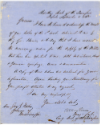
Civil War-Date Letter Signed – preparing for the Battle of Iuka
Letter Signed, 8 ½” x 10 ½”, to “Hon[orable] Jno. J. Pettus, Governor of Mississippi,” informing Pettus of the disposition of troops sent to reinforce the militia shortly before the Battle of Iuka, Mississippi, September 19, 1862, resulting in Price’s defeat by Union General Wiliam S. Rosecrans. Docketed on the reverse, presumably by Governor Pettus: “Gen[eral] Price writes in regard to his order to supply Militia & transmit copy of said order.”
“H[ea]d Q[uarte]rs Dist[rict] of the Tennessee
Tupelo [Mississippi], September 5, 1862
Governor,
I have the honor to acknowledge the receipt of your letter of the 1st inst[ant]; delivered to me by Brig[adier] Gen[eral] Harris, & to say that I have issued the necessary orders for the supply of the Militia that have been reported to me, with subsistence, Camp & Garrison equipage, Arms & ammunition.
A copy of these orders are enclosed for your information. Again thanking your Excellency for Your prompt attention to my request.
I am very respectfully,
Your ob[e]d[ien]t S[er]v[an]t,
Sterling Price
Maj[or] Gen[era]l
Com[mandin]g Dist[rict] of the Tennessee.”
Sound overall, with two horizontal folds; smearing of ink at the conclusion; text is unaffected by age spotting at the edges.
 RANDOLPH, GEORGE WYTHE (1818-67) Confederate Brigadier General; Confederate Secretary of War- 1862
RANDOLPH, GEORGE WYTHE (1818-67) Confederate Brigadier General; Confederate Secretary of War- 1862
-100.png)
-100.png)
-100.png)
Civil War-Date Document Signed
Document Signed, an 8” x 10” folded four-page letter sheet, Richmond, Virginia, March 24, 1862, Geo. W. Randolph,” to “O. Sibley, Jr., Esq[uire], 3[r]d Ala[bama] Reg[imen]t, Care G.T. Lathrop, Engineer Bureau.” On an official, imprinted Confederate form, Randolph forwards an important printed Circular from previous War Secretary Judah P. Benjamin, included on the subsequent pages, detailing the provisions for the enlistment of volunteers. A further notation beneath is initialed “G.W.B.” The upper left corners of both leaves bear circular embossing with Virginia’s “SIC SEMPER TYRANNIS” motto.
Overall condition is very good, with light, even toning and two horizontal folds; minor smearing of ink at the conclusion of Randolph’s signature.
 RAWLINS, JOHN AARON (1831-69) Union Brigadier General - Illinois; U.S. Secretary of War – 1869
RAWLINS, JOHN AARON (1831-69) Union Brigadier General - Illinois; U.S. Secretary of War – 1869
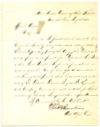
Civil War-Date Document Signed - General Grant banishes Prostitutes from the District of West Tennessee
Document Signed, 7 ¾” x 10”, a manuscript special order, signed by Rawlins as assistant adjutant general on behalf of Major General Ulysses S. Grant. The order explicitly bans the unauthorized travel of women from northern rail points to the army’s encampments, along with their presence in camp.
“Head Quarters District of West Tennessee.
Corinth, Miss[issippi], July 20th 1862.
Special Order
No. 139.
No females will be allowed to leave Columbus, Kentucky, or any intermediate railway Station by Railroad, to join any part of the Army of this District without a special written permit from Department Head Quarters or these Head Quarters. All females from abroad remaining within Camp lines after the 31st instant, not having such permits, shall be arrested and sent out of the District. Division, Brigade, Port, Regimental, and Company Commanders will see to the faithful execution of this order throughout their respective Commands.
By Command of Maj[or] Gen[eral] U.S. Grant.
Jno. A. Rawlins,
Ass[istan]t Adj[uta]nt Gen[era]l.
As early-war offensives made inroads into Confederate territory, both east and west, the occupying Union Army was inevitably followed by another, consisting of profiteers and opportunists of all types, including prostitutes. By this order, Grant intends to thwart the proliferation of prostitution among army personnel in the newly occupied regions of Tennessee, northern Mississippi, and Alabama, secured by the recent Union victory at the Battle of Shiloh.
Excellent, with light, even toning and two horizontal folds.
 RAWLINS, JOHN AARON (1831-69) Union Brigadier General; Close friend, confidant, and staff officer to General Ulysses S. Grant; U.S. Secretary of War - 1869
RAWLINS, JOHN AARON (1831-69) Union Brigadier General; Close friend, confidant, and staff officer to General Ulysses S. Grant; U.S. Secretary of War - 1869

Signed Card, 2 ½” x 4”, March 22, 1869, Washington, D.C., “John A. Rawlins,” as U.S. Secretary of War. The recipient’s name, date, just nine days after he assumed office as secretary or war, and Rawlins’s title are accomplished in an unidentified clerical hand.
Excellent overall, with old mounting remnants on the reverse.
 REYNOLDS, JOHN FULTON (1820-63) Union Major General – Pennsylvania; Killed-in-Action at the Battle of Gettysburg – July 1, 1863; Veteran of the Mexican War
REYNOLDS, JOHN FULTON (1820-63) Union Major General – Pennsylvania; Killed-in-Action at the Battle of Gettysburg – July 1, 1863; Veteran of the Mexican War

Civil War-Date Autograph
Signature & Rank, “John F. Reynolds, Brig[adier] Gen[era]l Vol[unteer]s,” on a 1” x 3” portion of a larger document, dated “1862” in an unidentified hand at lower left.
An excellent early-war example, with the rank Reynolds held from August 20, 1861 until promotion to major general, effective November 29, 1862.
 RUSK, JEREMIAH McLAIN (1830-93) Union Brevet Brigadier General; Lieutenant Colonel of the 25th Wisconsin Infantry; Governor of Wisconsin – 1882-89; U.S. Agriculture Secretary – 1889-93; U.S. Representative – Wisconsin – 1871-77
RUSK, JEREMIAH McLAIN (1830-93) Union Brevet Brigadier General; Lieutenant Colonel of the 25th Wisconsin Infantry; Governor of Wisconsin – 1882-89; U.S. Agriculture Secretary – 1889-93; U.S. Representative – Wisconsin – 1871-77

Signed Card, 2” x 3 ½”, “J.M. Rusk,” with bevelled edges and rounded corners.
Excellent, with light, even toning; old mounting remnants on the reverse.
 SHERRILL, ELIAKIM (1813-63) Union Colonel - 126th New York Infantry; Led a brigade in the Army of the Potomac; Mortally wounded during Pickett’s Charge at the Battle of Gettysburg – July 3, 1863; U.S. Representative – New York – 1847-49
SHERRILL, ELIAKIM (1813-63) Union Colonel - 126th New York Infantry; Led a brigade in the Army of the Potomac; Mortally wounded during Pickett’s Charge at the Battle of Gettysburg – July 3, 1863; U.S. Representative – New York – 1847-49

Signature, as U.S. Representative from New York, “E. Sherrill, Shandaken, N. York,” on a 2 ¾” x 5” portion of an album page.
Lightly and evenly toned; somewhat closely trimmed at the upper edge.
 TANEY, ROGER BROOKE (1777-1864) Chief Justice of the United States, Supreme Court – 1836-64; Remembered for the infamous Dred Scott Decision; U.S. Treasury Secretary – 1834-35; U.S. Attorney General – 1831-33; U.S. War Secretary - 1831
TANEY, ROGER BROOKE (1777-1864) Chief Justice of the United States, Supreme Court – 1836-64; Remembered for the infamous Dred Scott Decision; U.S. Treasury Secretary – 1834-35; U.S. Attorney General – 1831-33; U.S. War Secretary - 1831

Document Signed, 8 ¼” x 10”, an early manuscript Frederick County, Maryland court filing, recommending the admission of a man as an attorney; docketed “15th February 1811” on the reverse.
“To the Hon[ora]ble the Judges of Frederick County Court. The subscribers appointed by the court to report on the application of Mr. Addison White to be admitted as a member of the Bar, do hereby respectfully certify to the court that it is their opinion Mr. White should be admitted to qualify as an attorney of Frederick County Court. John Harison Thomas. R.B. Taney.”
Exhibiting the usual folds and light toning, with heavier wear, staining, and chipping at the corners and edges.
 WILLIAMS, THOMAS LANIER, III “Tennessee” (1911-83) American Playwright & Screenwriter, most remembered for “A Streetcar Named Desire” and “Cat on a Hot Tin Roof”
WILLIAMS, THOMAS LANIER, III “Tennessee” (1911-83) American Playwright & Screenwriter, most remembered for “A Streetcar Named Desire” and “Cat on a Hot Tin Roof”
-100.png)
-100.png)
A Streetcar Named Desire
Autograph Document Signed, a partly printed 2 ¾” x 6” check, “Tennessee Williams, 632 ½ St. Peter.” From his New Orleans residence, early in the year when the Pulitzer Prize-winning play, “A Streetcar Named Desire,” undoubtedly Williams’ most notable work, was first performed to critical acclaim. Drawn on the Whitney National Bank of New Orleans, also dated and engrossed in his hand: “Jan[uary] 4 1947,” payable to Waguesback [sic] -Pratt Co.” for “Seventy five no/100” Dollars.
Reverse bears the recipient’s stamped endorsement. The signature is unaffected by hole-punch cancellation, as well as several minor creases.
Show Paging

-1302.png)
-1819.png)
-1495.png)
-1506.png)
-1340.png)
-1336.png)
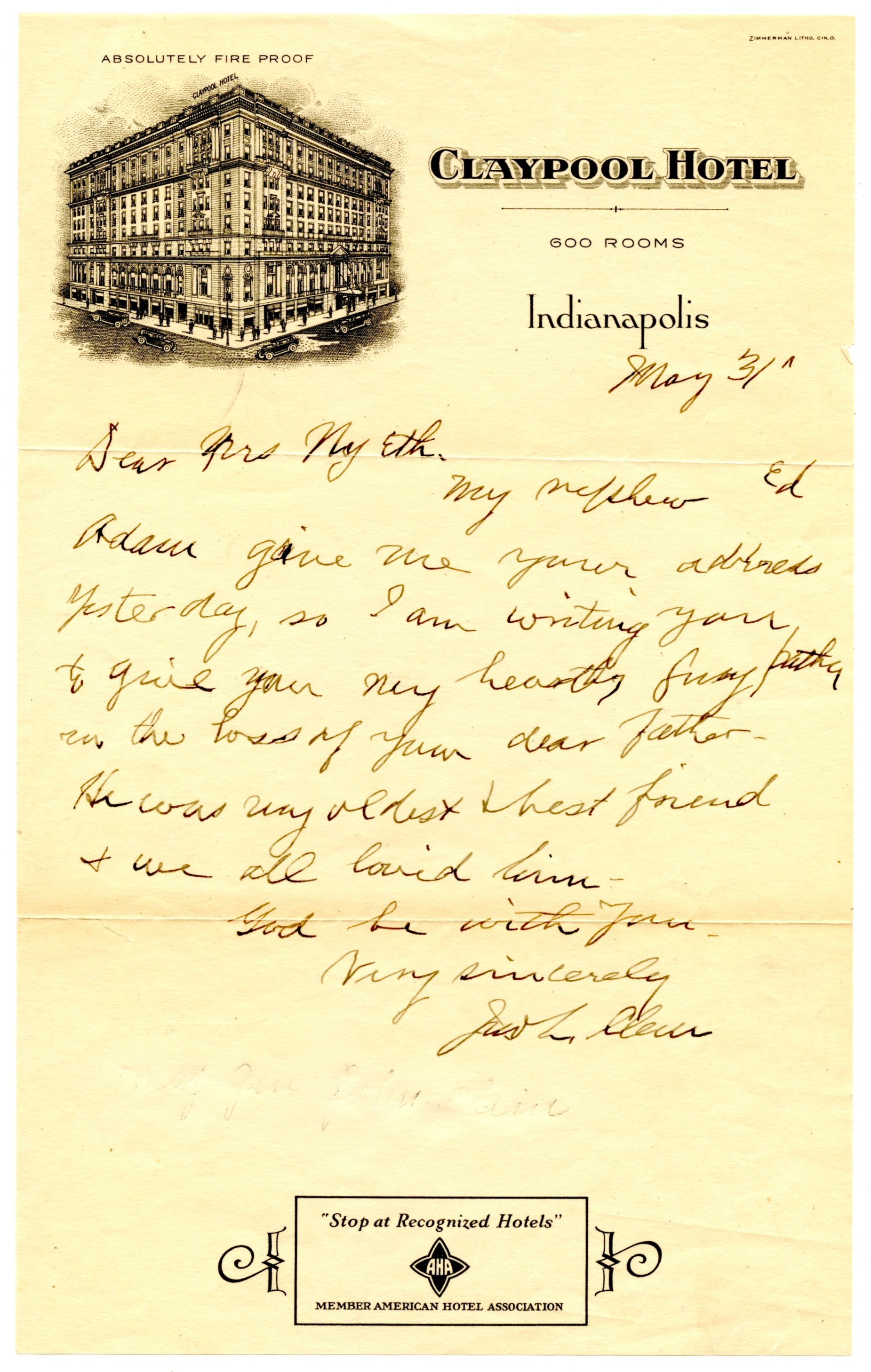
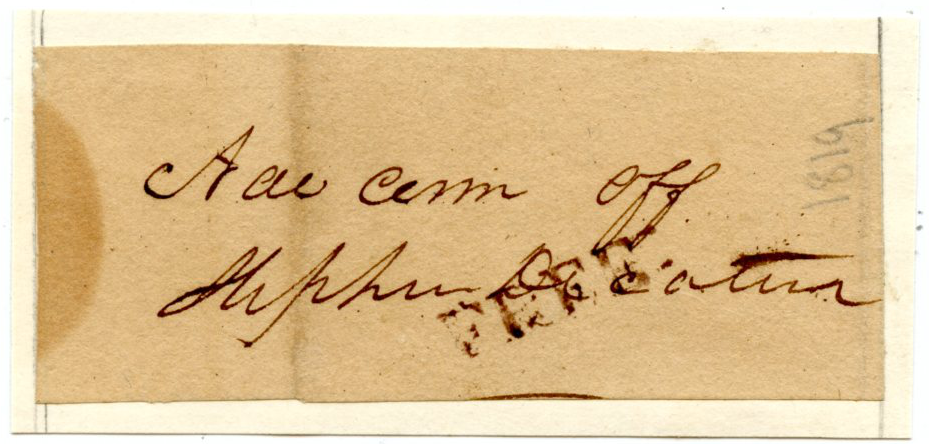
-1999.png)
-1999.png)

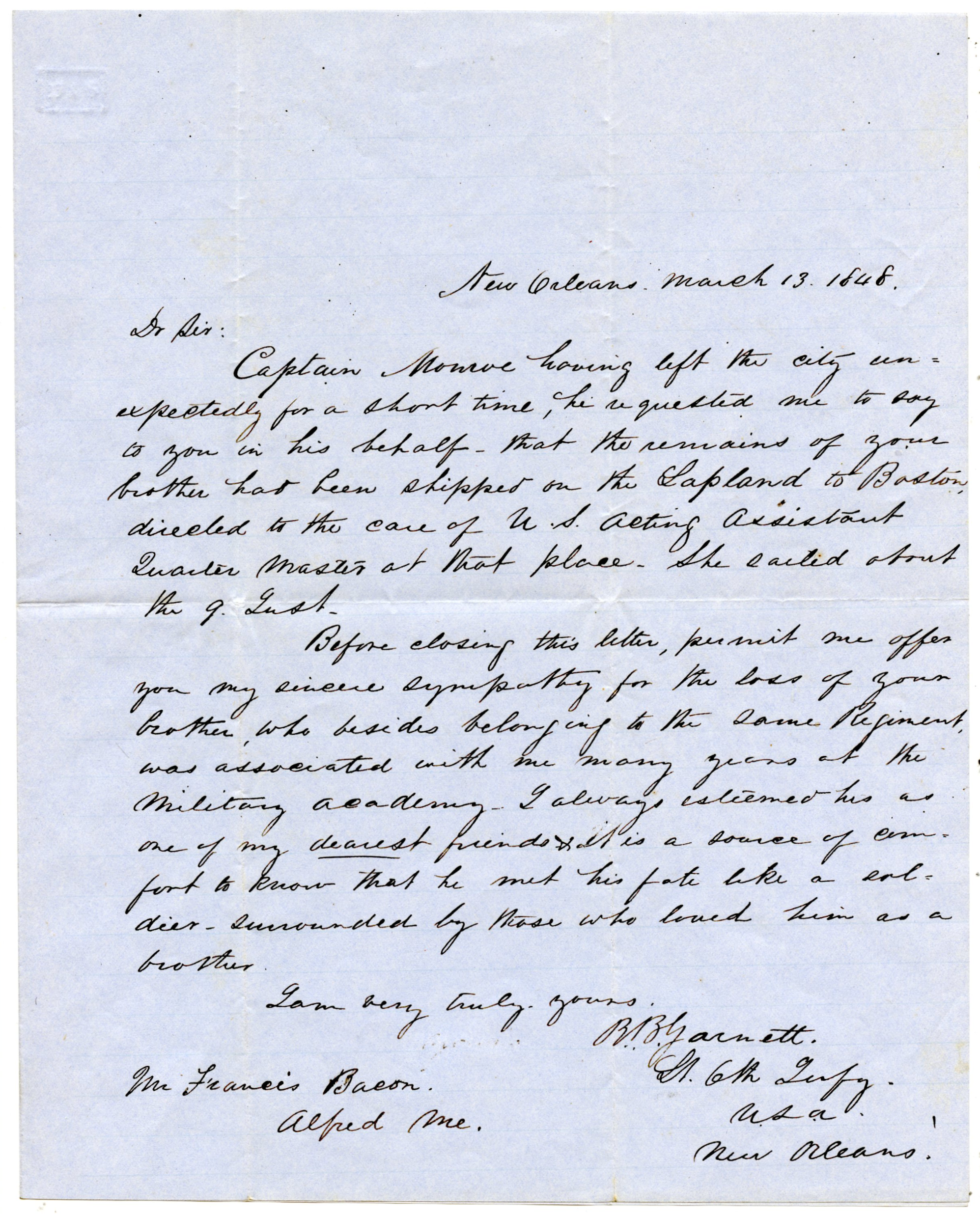

-1999.png)
-1999.png)
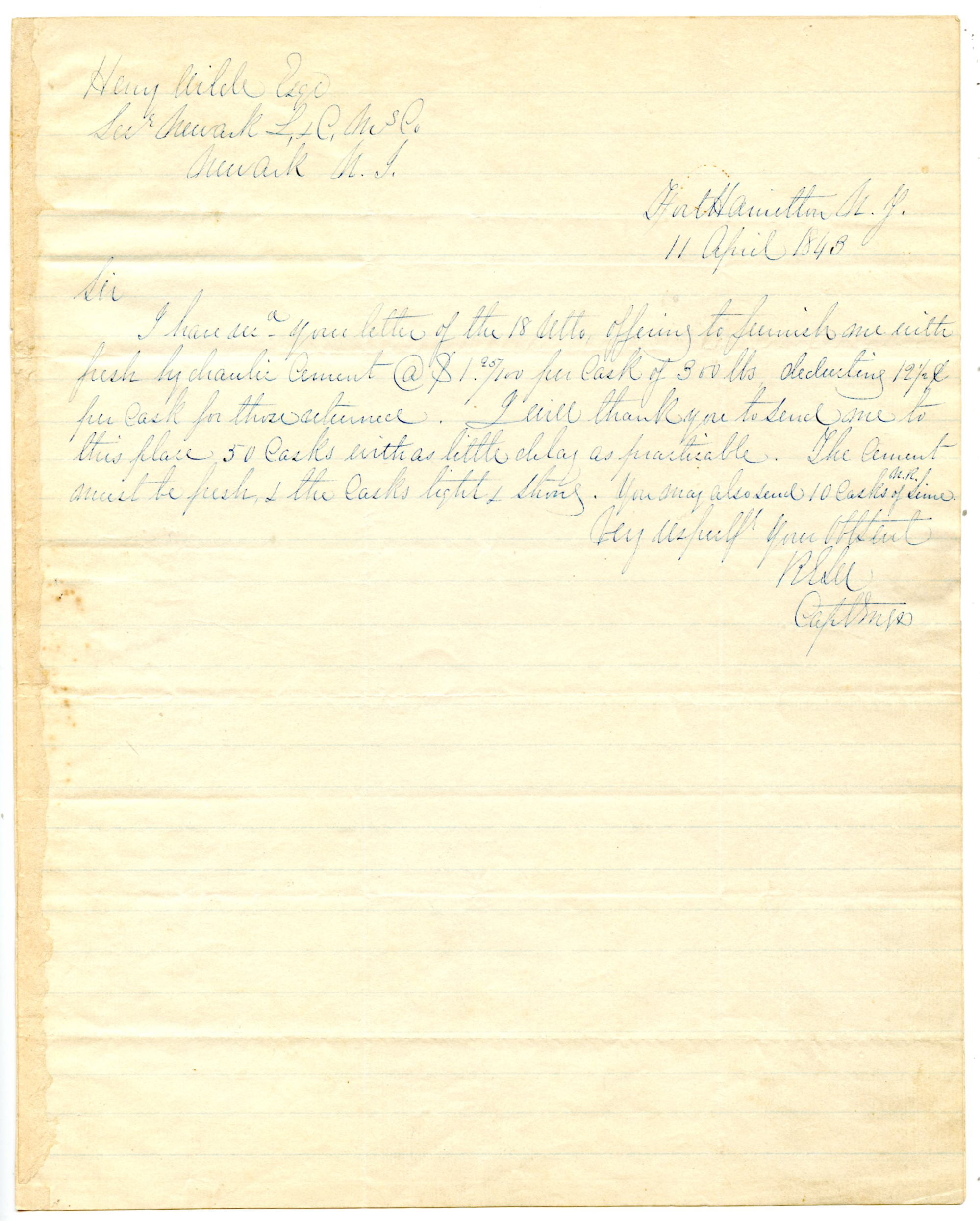
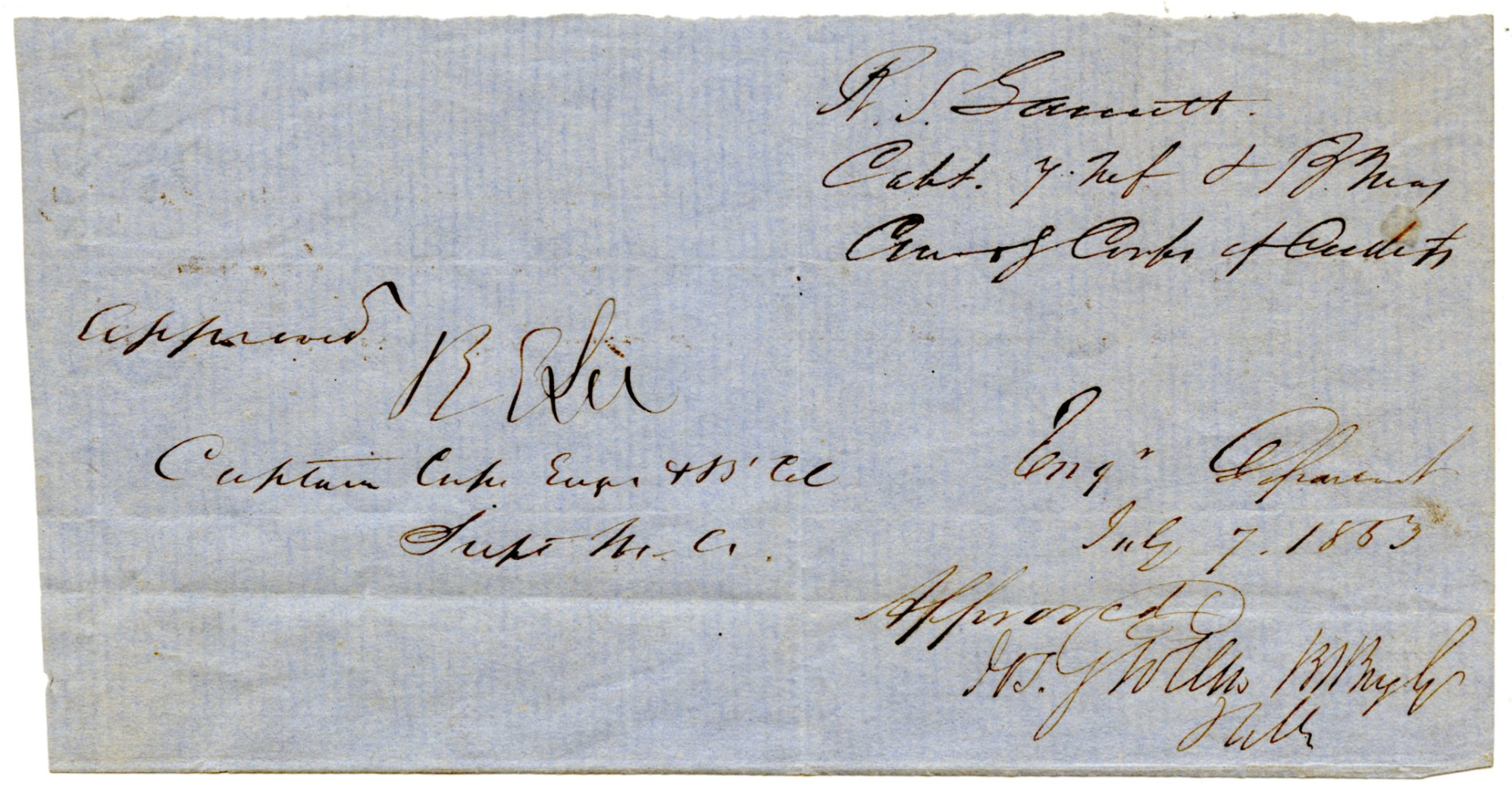
-1995.png)
-1995.png)
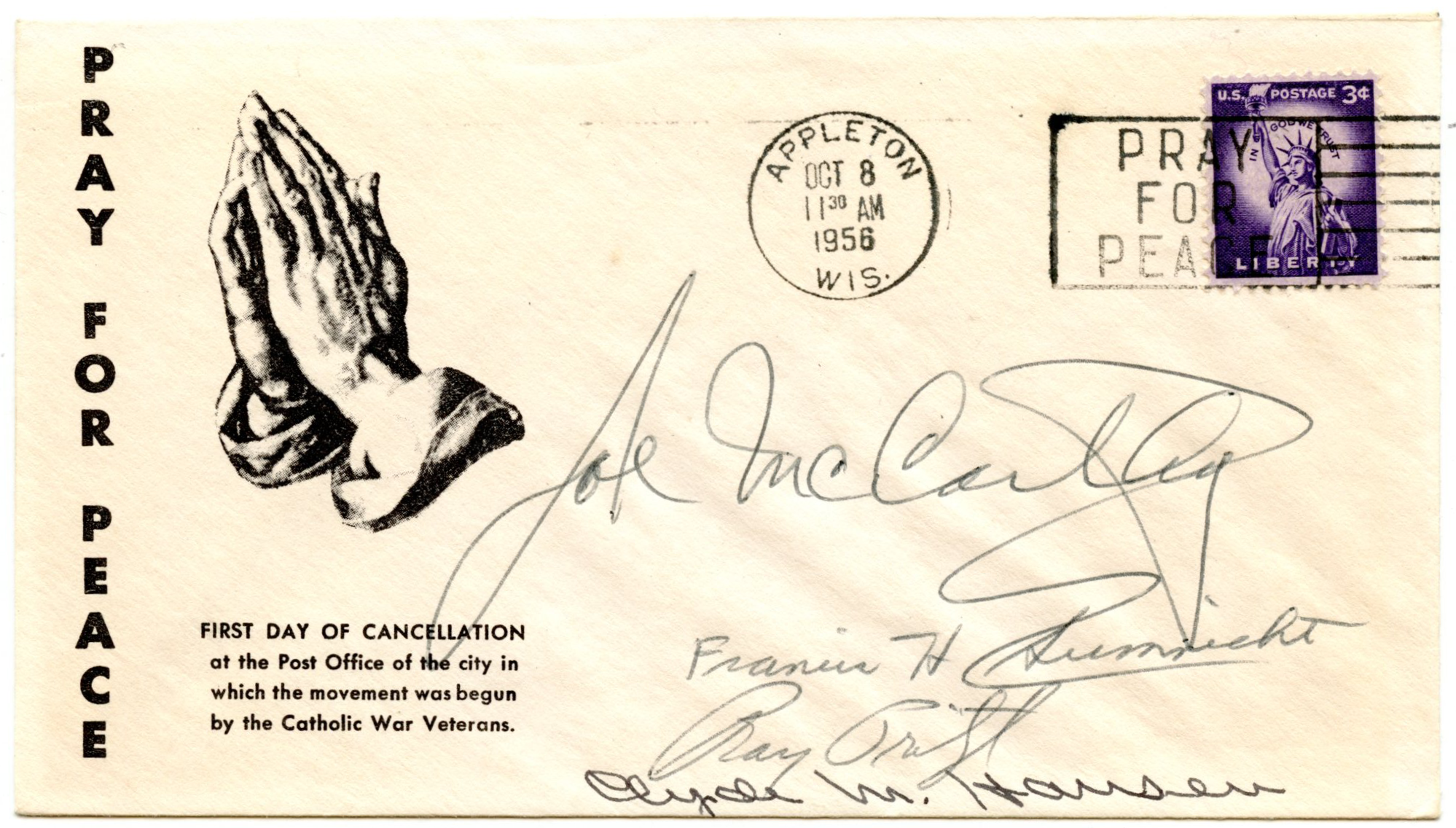
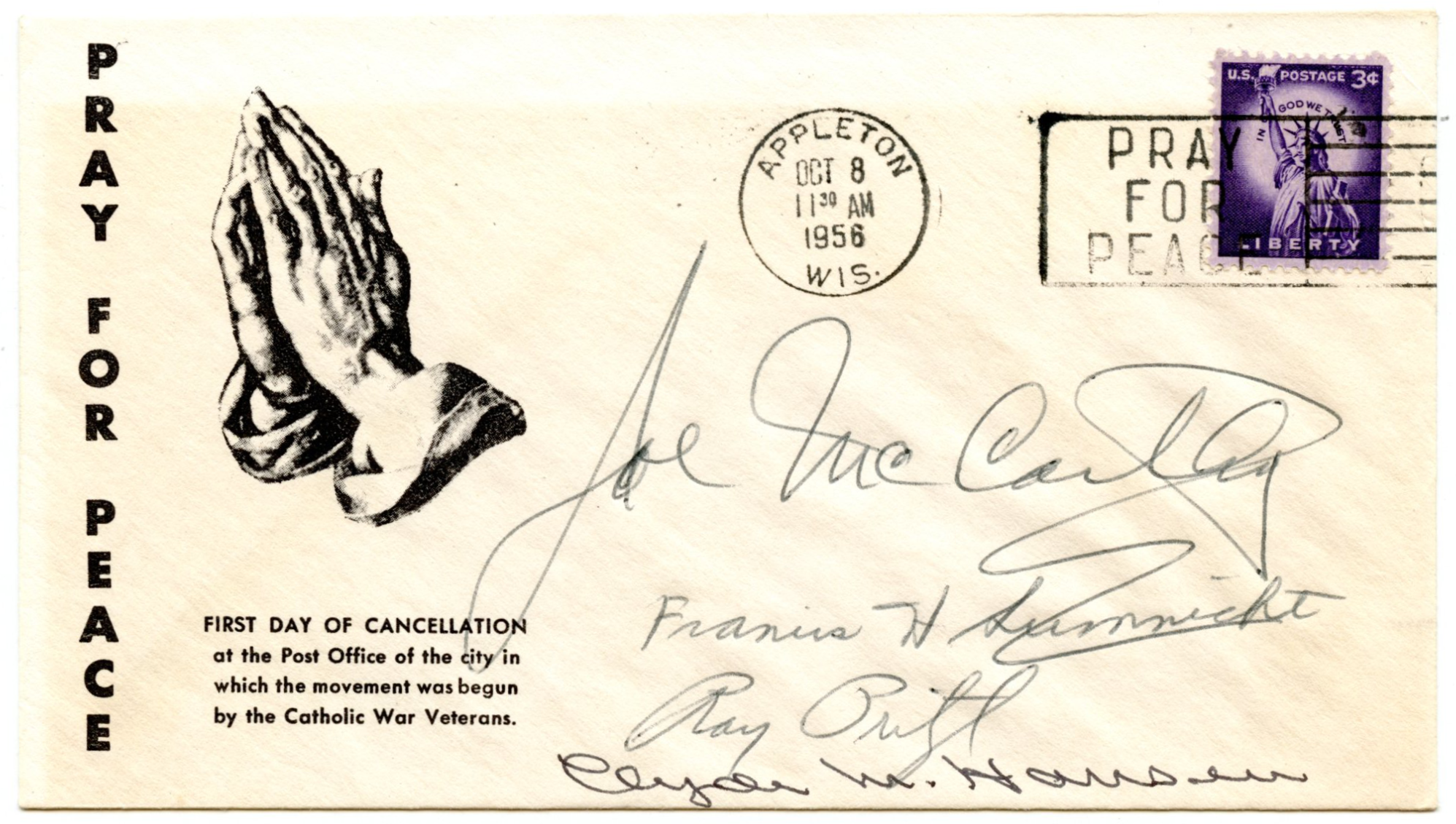
-1995.png)

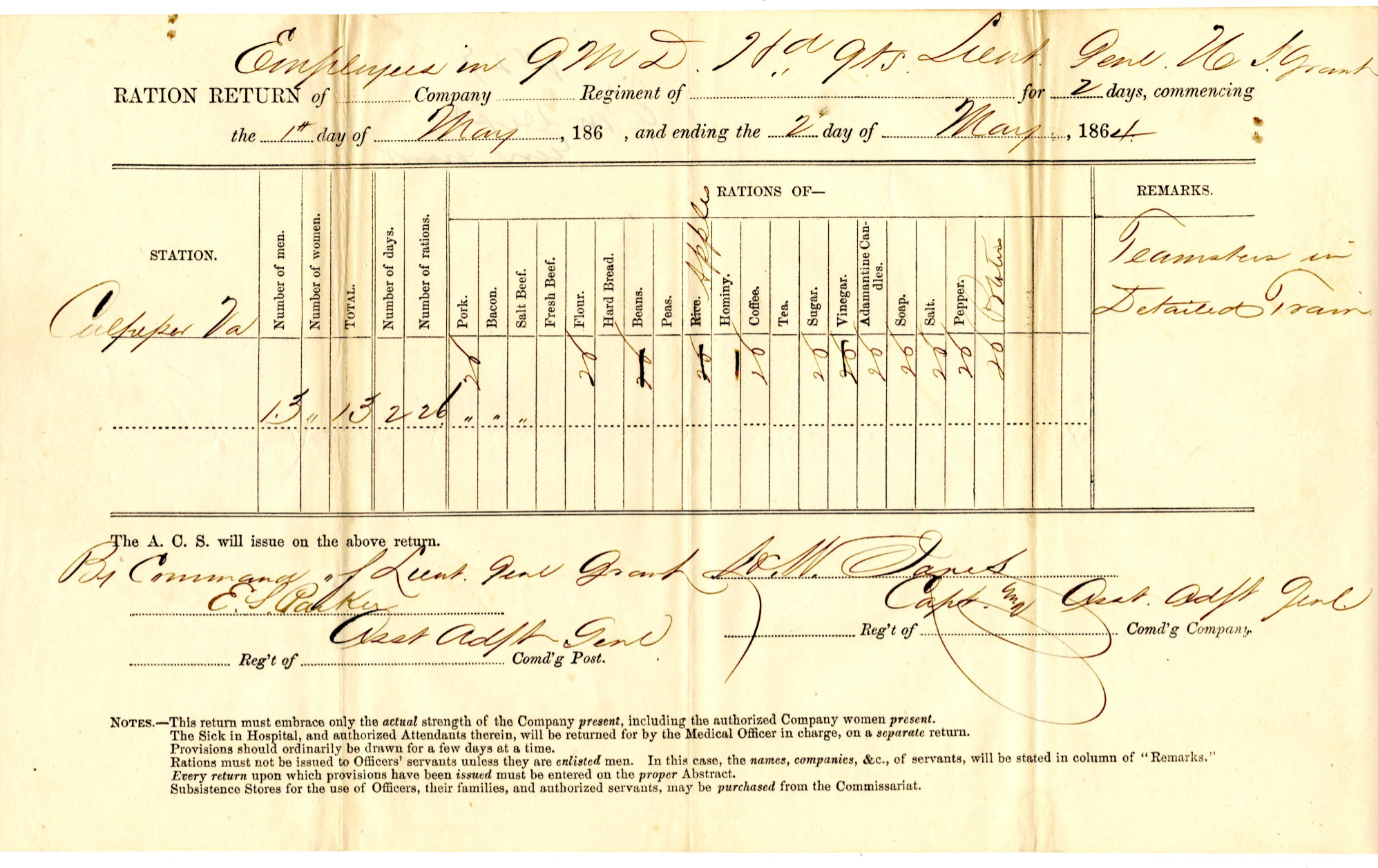
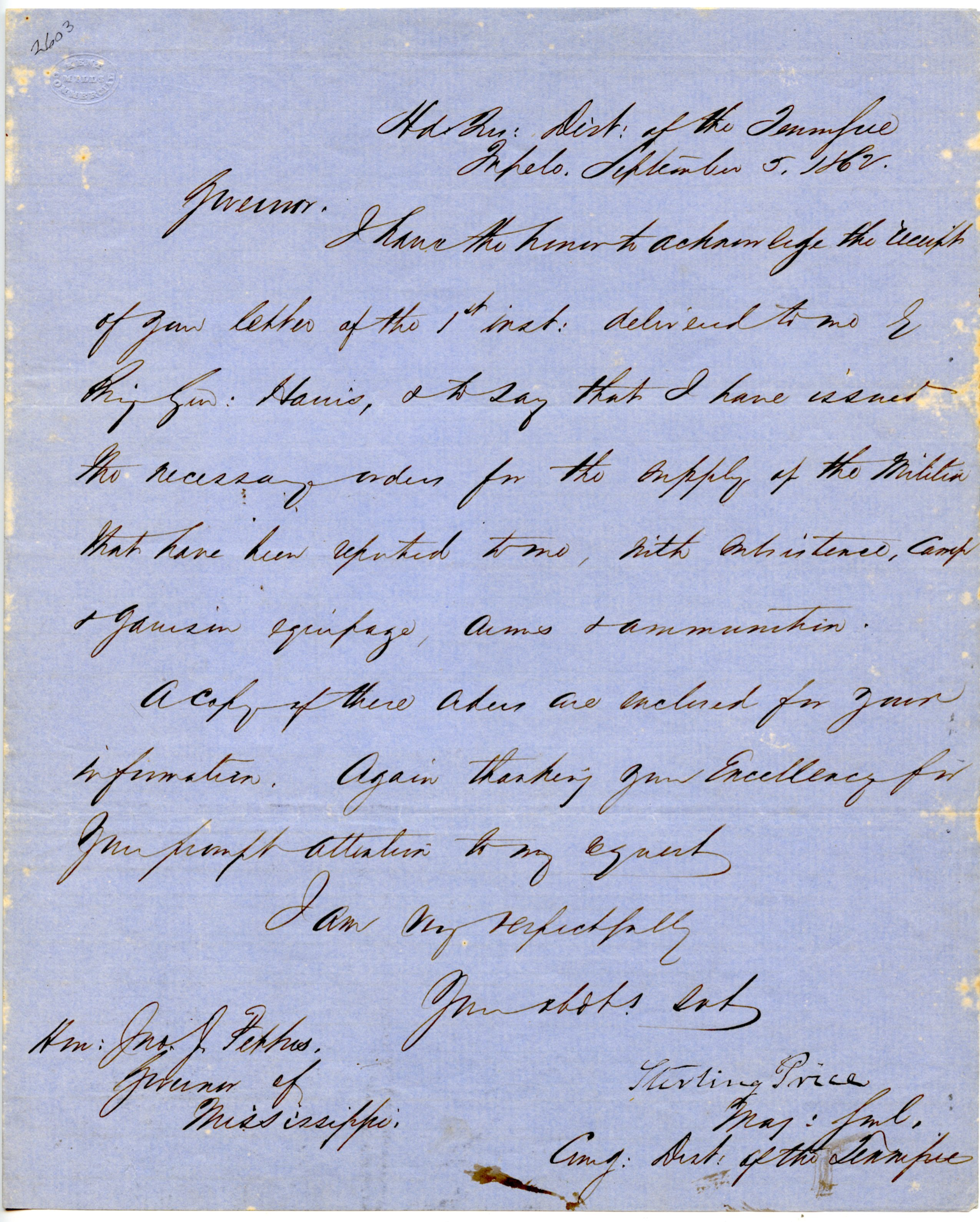
-1999.png)
-1999.png)
-1999.png)
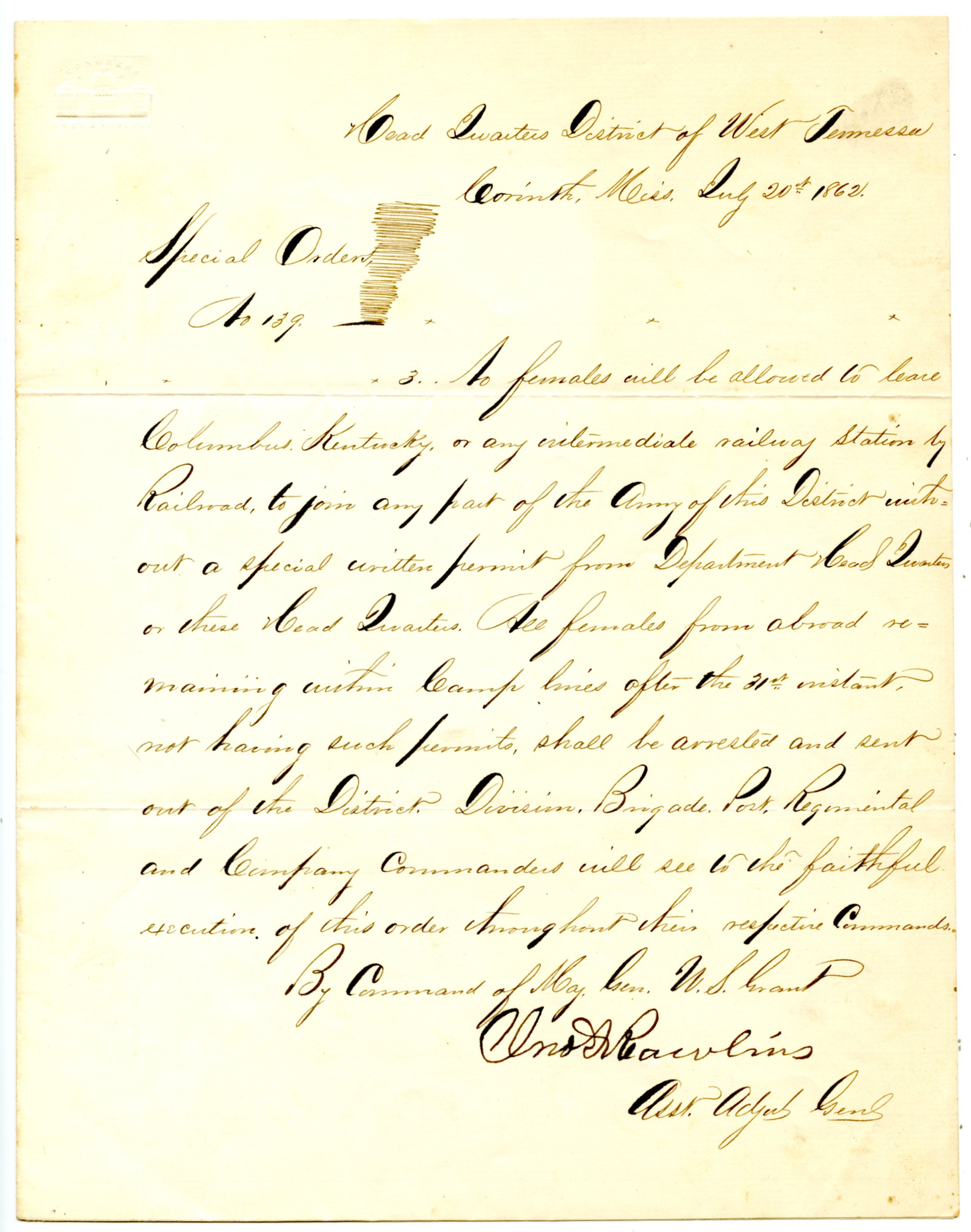
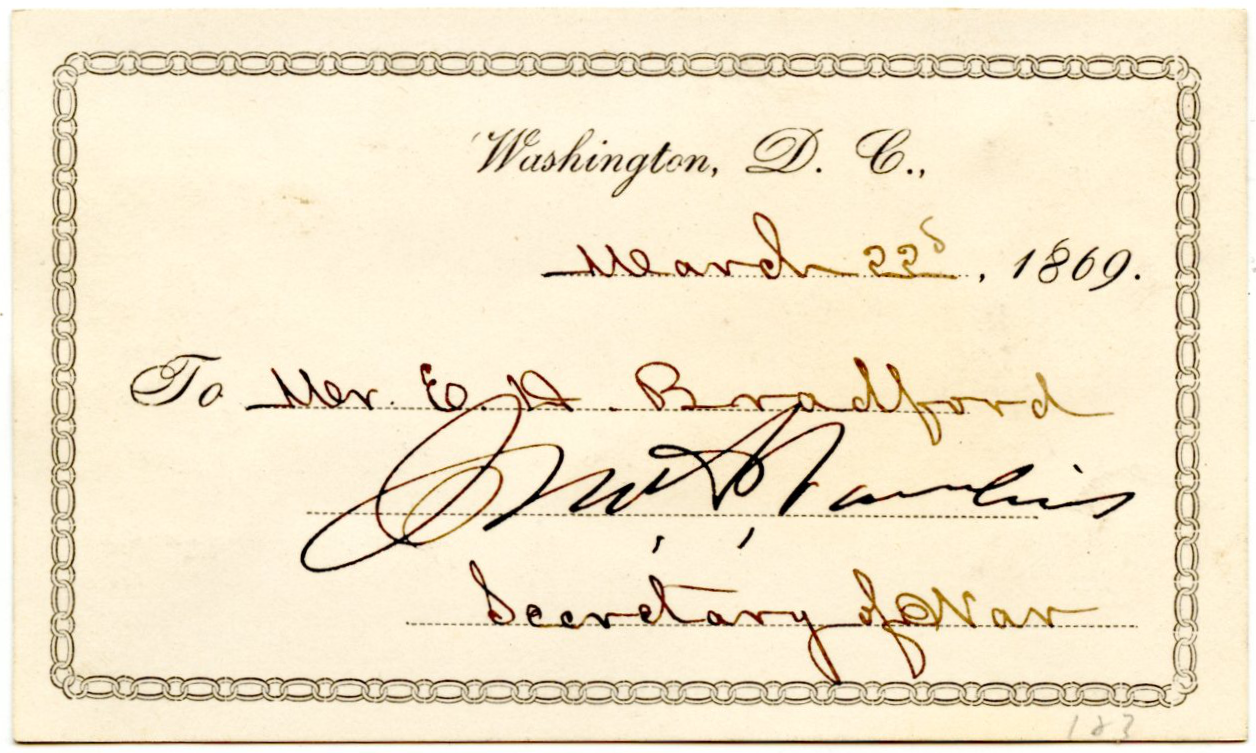
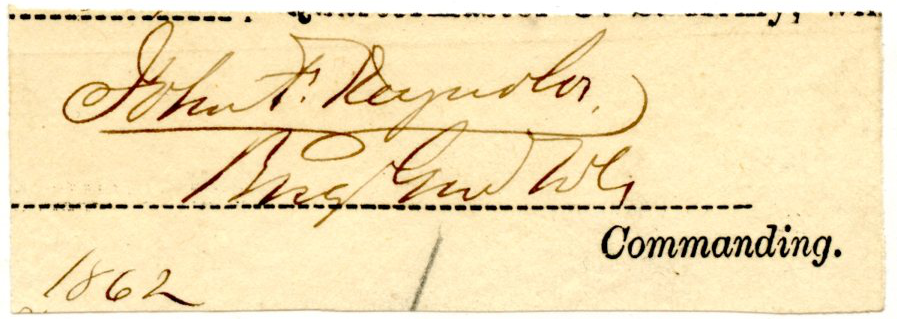
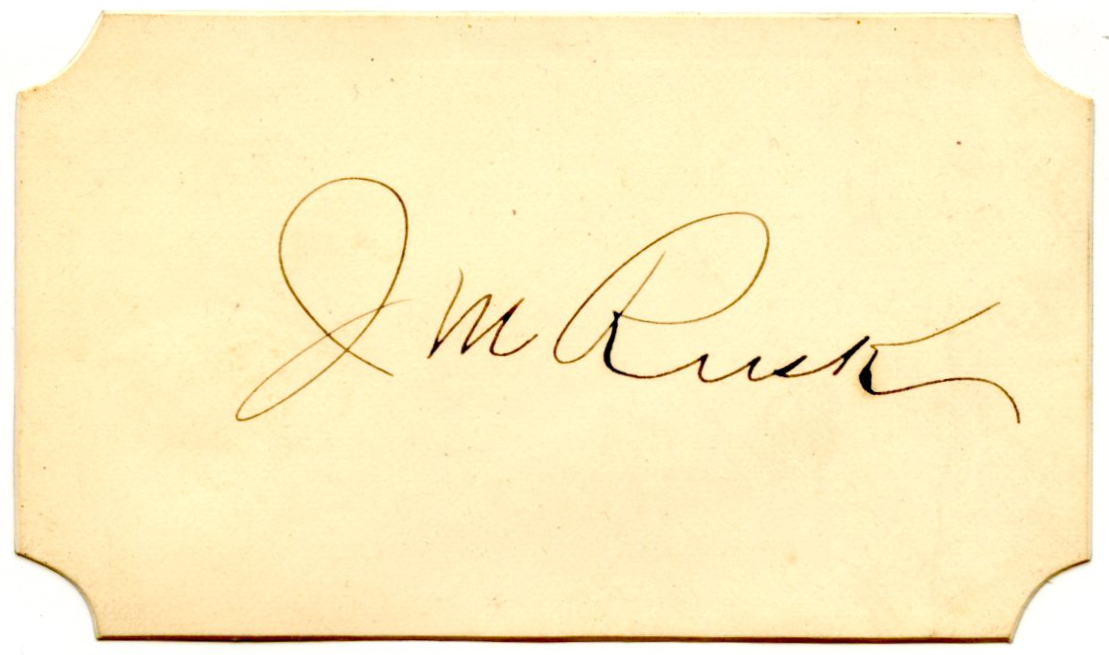
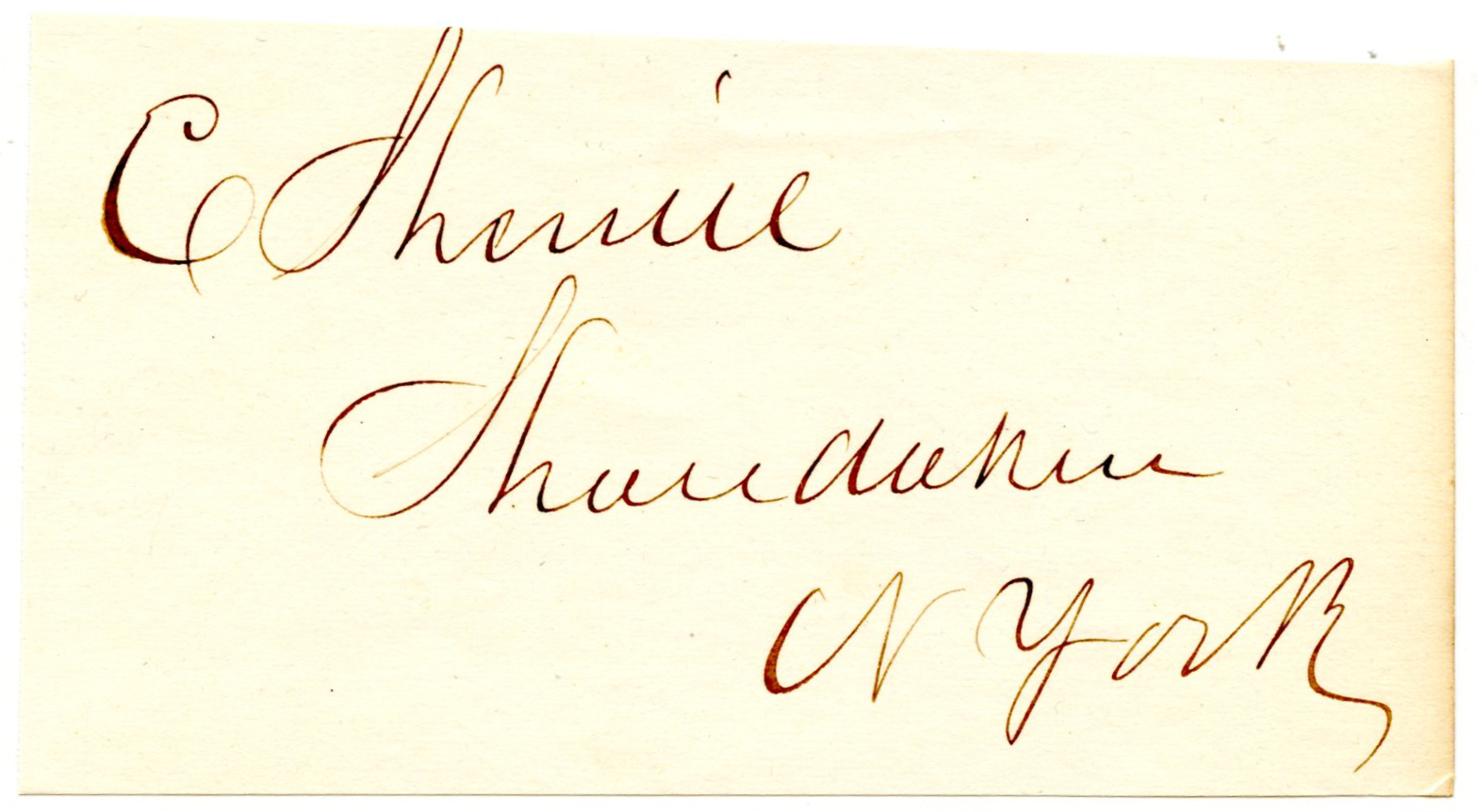

-1827.png)
-1880.png)